Citizen Sleeper 2: Hands-On Preview and Interview with Gareth Damian Martin
Martin talks to James O'Connor about the stress, solidarity, and sequels
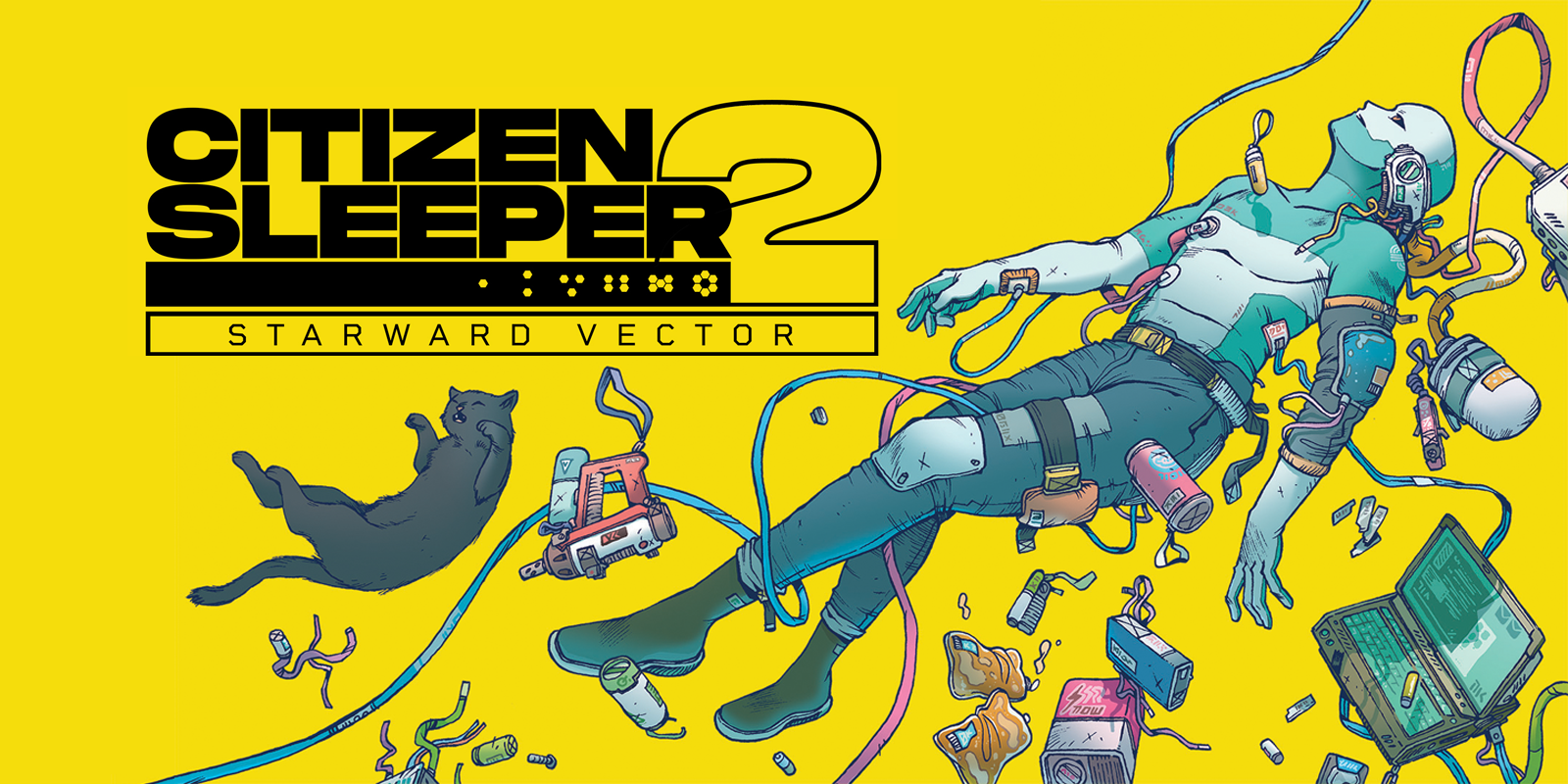
In the middle of my interview with Gareth Damian Martin, they show me a new mechanic in Citizen Sleeper 2: Starward Vector, one that lets you tweak your dice rolls with a "push". This will heighten your accumulated stress - another new mechanic, which we talk about in great detail during our hour-long conversation - but it's generally worth it for the advantage it gives you. Your "push" ability, Martin explains, depends on your class, but you can also change it as you progress through the game, tweaking it to cause more stress with a bigger potential payoff, or less stress and a more conservative advantage. I ask them what seems to be an obvious question: is there a risk here that an obvious "right" build will emerge? How do you balance this?
Martin chooses their words purposefully as they reply to me. "You know, balance is a myth, I always say, because it's unique to players. People always talk about balance like it's an objective truth, but unfortunately it's not".
I quietly wonder if I've just asked a silly question, the sort of boring Game Design 101 question that is a bit irrelevant for the interesting work Martin does. They are a solo developer, and both of the previous games they've developed under their label Jump Over The Age have been beloved, celebrated narrative games with interesting mechanical complexities. They are the exact kind of person who can say something like "balance is a myth" and then back it up with a cogent point.
And indeed, Martin continues talking: "It's very tricky, and it's something that I'm constantly working on. One of the things with balance in this game is that succeeding a Contract is not necessarily the best possible outcome. Succeeding a Contract in the fewest number of cycles, with the least number of resource use, is the optimum. But there's a bit more of a nuanced space that exists between completely failing the Contract and breaking all your dice slots and succeeding the Contract in one cycle. Every cycle you're there, you're spending supplies and supplies cost money. There's lots of ways to be good at this game, if people want to".
It's a complex answer to my basic question, and one that is indicative of the complications inherent in making a sequel to Citizen Sleeper. In this answer, there's a mix of old and new concepts: the dice metaphors that power the whole series, the new "Contract" mission types that whisk players away to new locations for standalone missions, the different systems that players have to monitor during play to ensure the wellbeing of their character. After going hands-on with an early section of Citizen Sleeper 2, and watching Martin play through the game even further, it becomes clear that this sequel is re-examining what a "Citizen Sleeper" game is, and approaching the material of Martin's world from different angles.
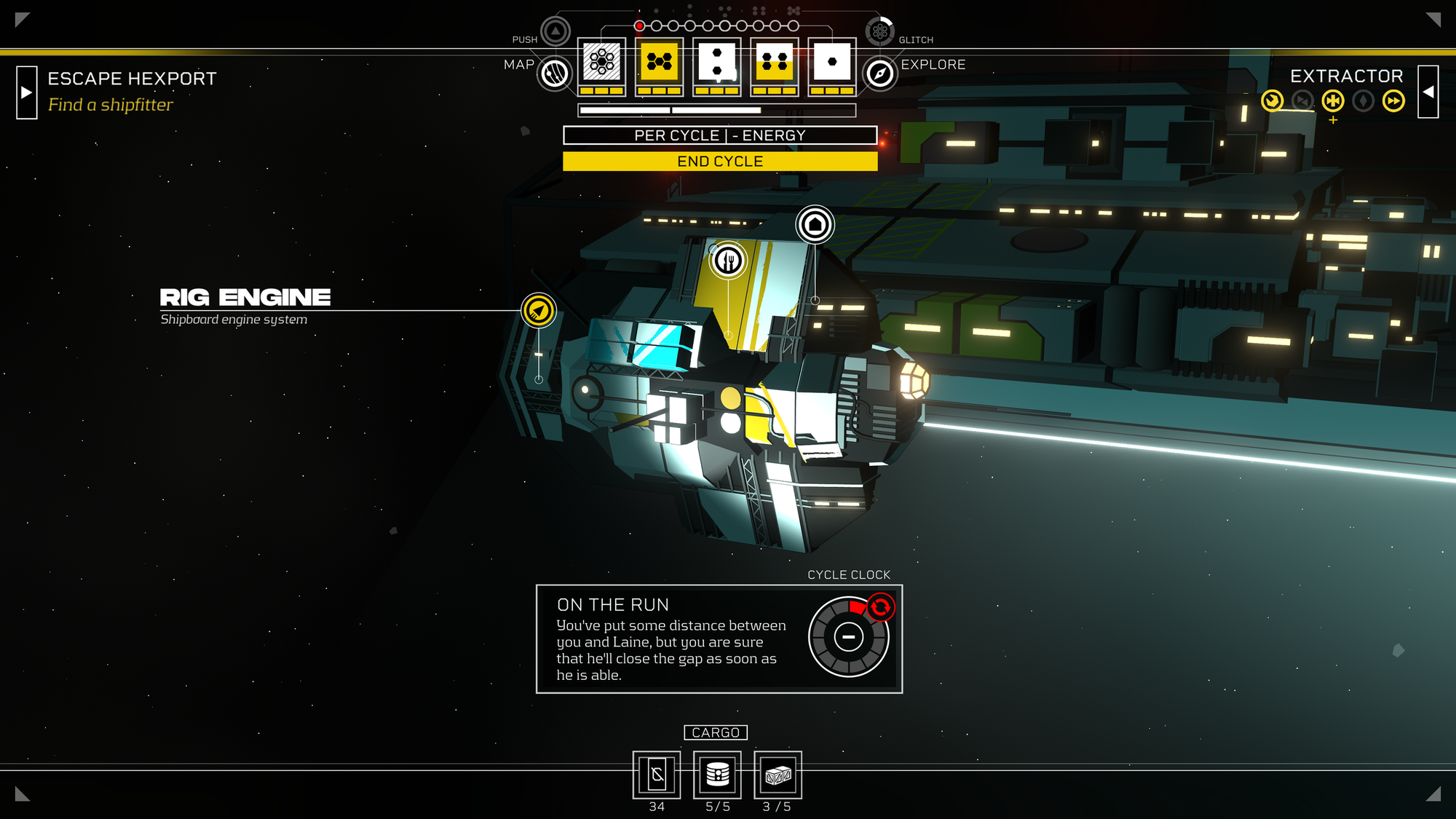
"You know, balance is a myth, I always say, because it's unique to players. People always talk about balance like it's an objective truth, but unfortunately it's not."
Gareth Damian Martin
Citizen Sleeper 2 is about another Sleeper, a person consisting of a robot body and a human mind. Whereas the first game's hero had escaped a life of servitude and required stabiliser injections to keep moving, the sequel's protagonist has a different ailment: they've undergone a reboot that had to be stopped midway, which has wiped swathes of their memory. They remember some aspects of their life up to this point, but not others. They know that a psychotic foe named Laine is stalking them across space, but Serafin, their crew mate with whom they have an obvious bond, has to start their friendship from scratch. "Your body is kind of falling apart in a different way, or is changing itself in a different way (compared to the first game)", Martin tells me. Laine, a gang lieutenant from the ominously named Darkside station, has a backdoor into the Sleeper's mind, which he's using to track his quarry. In the portion of the game I played and saw, the Sleeper was trying to figure out what, exactly, was wrong with them, hoping to find answers and safe passage to the next destination before Laine's arrival.
If you played the original Citizen Sleeper, the gameplay loop initially looks very similar. Each in-game day, you have a certain number of dice with which to perform tasks. The dice are rolled automatically at the start of each day, and the numbers displayed determine their efficacy - a six or five is more likely to render a good outcome than a lower number, and using a one for many activities is quite dangerous. You use the dice for various functions while also spending money and resources to gain more energy or improve your circumstances. Your broad objectives, or "Drives", generally involve using your dice to progress several tasks, and progression comes down to a mix of luck, efficiency, and careful planning, always being mindful of your strengths and limitations. Various events and jobs are tracked on "clocks" that tick over each day, giving you a sense of how long you have before an event - like the arrival of Laine - occurs.
So far, so familiar. Citizen Sleeper 2, initially at least, looks and feels a lot like the first game. The visual style matches the original, the text-heavy interface is the same, and in the current demo a lot of the soundtrack matches what I remember from the first game. But the more I dug in - and the more Martin showed me - the clearer it became that Citizen Sleeper 2 is, in many ways, a very different game from its predecessor. It's a game with different things on its mind.
"If I was going to make a sequel to Citizen Sleeper, it needed to be about new things, and it needed to have new qualities to me", Martin tells me. " I don't want people to just feel like 'oh, it's the same thing but a different setting,' or 'this is just Citizen Sleeper 1 but better'. That's not the intent. I want to explore the systems that I set up in a different way and add new kinds of nuances or complexities to it".
Citizen Sleeper took place mostly on and around The Eye, a space station that players became familiar with over time. The sequel expands dramatically. The demo I played kicked off on Hexaport, a small hub area that is used for onboarding players. When I watched Martin play, they introduced me to another station called Fast Spindle, a gathering point for ships on their way to a nearby water-carrying asteroid, before eventually moving on to Flotsam, a hodge-podge location made from the scattered parts of other stations and ships.
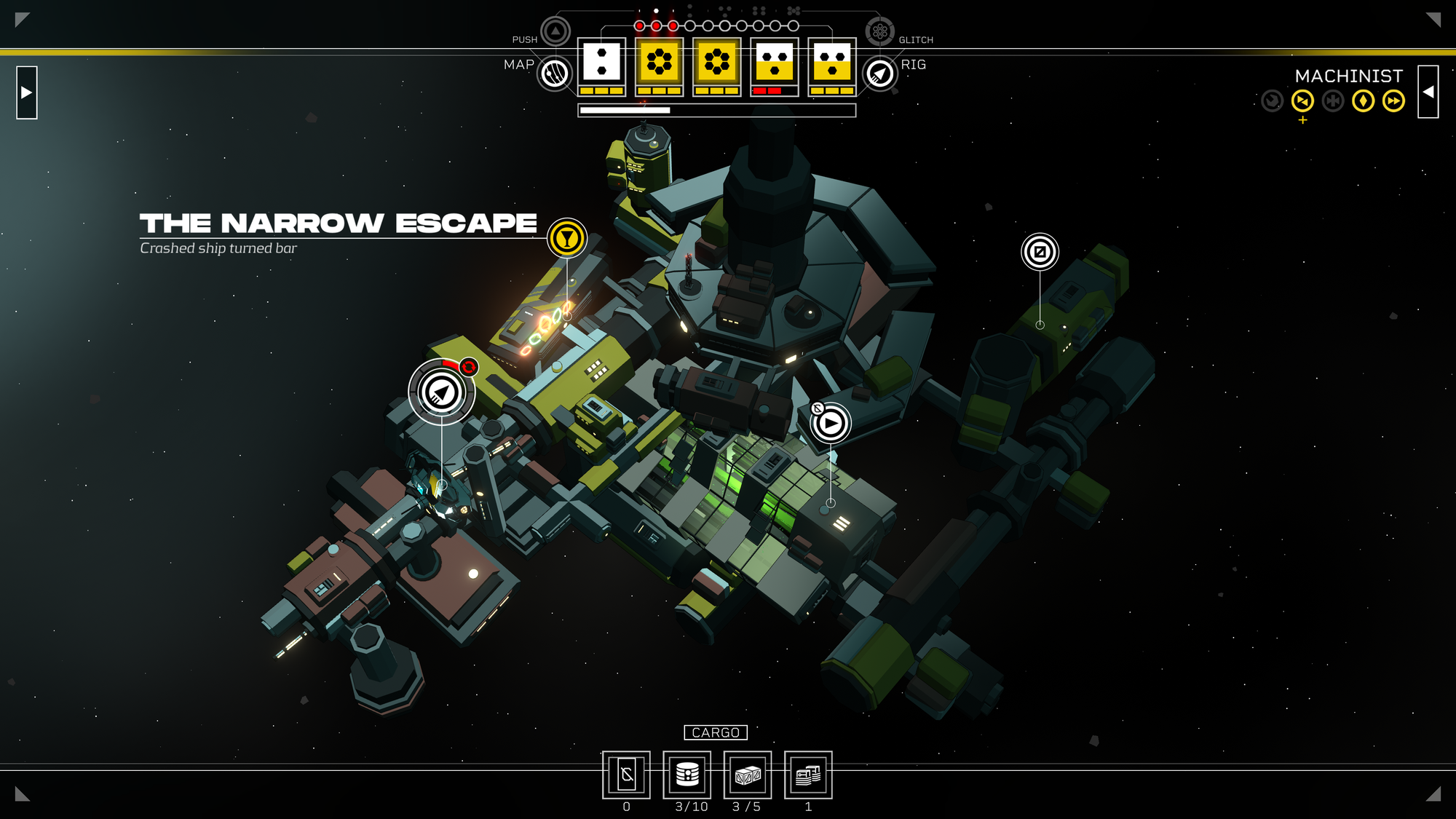
"If I was going to make a sequel to Citizen Sleeper, it needed to be about new things, and it needed to have new qualities to me..."
Gareth Damian Martin
This is one of the big changes for the sequel - instead of going deep on a single expanding location, players will travel across space and visit multiple hub areas. As you play and upgrade your crew and ship, new areas will be accessible. You may need to stop for fuel, or repairs, and you may or may not be pulled into different conflicts and situations in different hubs. You're on a journey this time.
This expanded exploration model lends itself to a new style of mission: Contracts. Throughout Citizen Sleeper 2, your ship will have a fluctuating crew of other members: some will stick around, some will leave at the next port, and sometimes a crew member will come onboard for one job and leave once it's finished. Contracts are one-off missions that you pursue with your crew, completing objectives within a contained space, usually with a specific outcome in mind when the Contract starts that may change as things play out. You can choose which crew to bring with you, and they'll bring their own abilities and dice to the mission.
"Through the Contract system, we have stories that develop in more dramatic, different ways", Martin says. They compare this to the sort of gameplay you might see in a tabletop RPG, where characters are pulled into a smaller, contained adventure. Some crew members will stay with you indefinitely, and cannot be missed, while others are entirely missable. "They're not like Mass Effect crew where you just install them in your ship, like an upgrade and then they just live there, saying the same three things over and over again", Martin explains. "They have their own lives".
Part of the intent, Martin says, is to give the game more of an episodic feeling - they cite Cowboy Bebop, Farscape, and Firefly as influences. It lets the game tell smaller, contained stories, while also giving players a different set of stakes and tensions to deal with, but it also lets Martin play with the mechanics in different ways - things can go wrong much faster on a Contract. "You go out on a Contract, and you have this high intensity gameplay that's much more strategic", they tell me. "And it's very nuanced. It's not about just even passing or failing the Contract. You might succeed at a Contract, but actually spend so much resource doing it, that it's actually not a profitable Contract, for example. So there's a lot of nuance to taking on Contracts". The clocks outside of the Contract are paused while you're in one, so you don't need to worry that you'll return to the Hub and find Laine waiting for you.
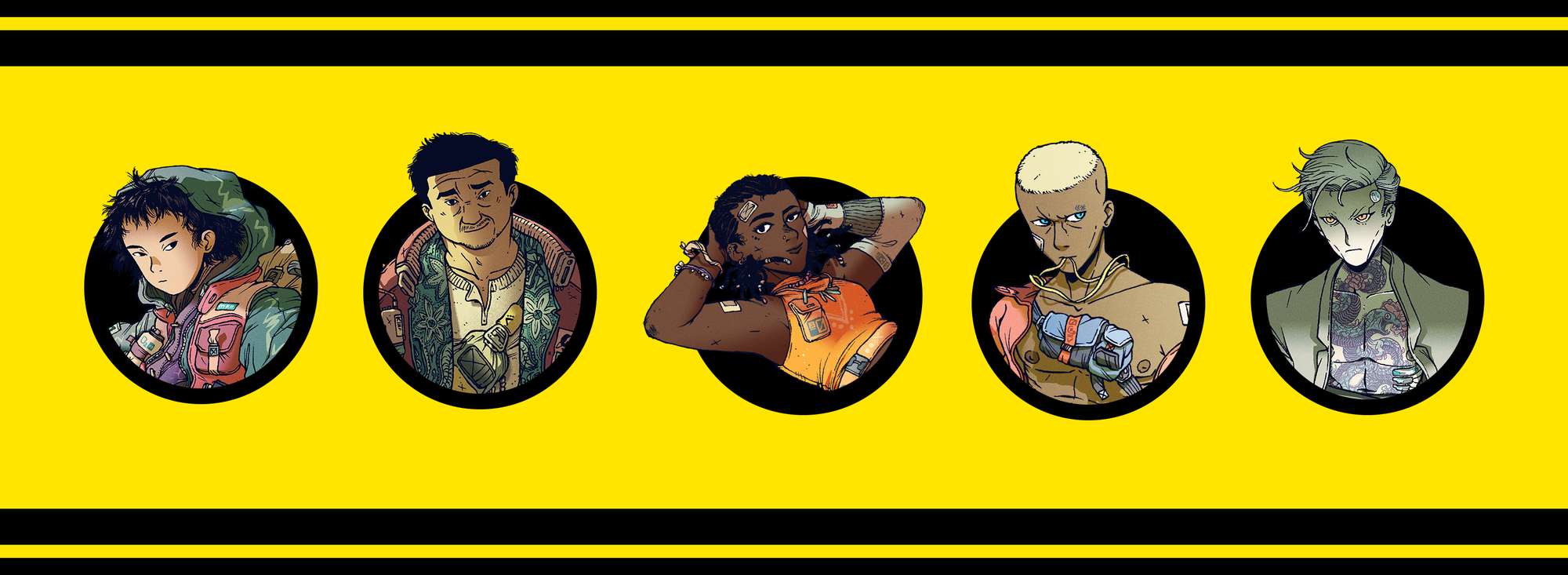
"They're not like Mass Effect crew where you just install them in your ship, like an upgrade and then they just live there, saying the same three things over and over again. They have their own lives."
Gareth Damian Martin
I played through two Contracts during my demo. One was a huge success, the other a spectacular failure. In both cases, the game's story adapted to let me continue. In fact, my bad outcome - where I focused more on gathering resources than completing the objective once the writing was on the wall - ended up not being so bad when all was said and done. One crew member (who had weaseled their way onto my crew as I was accepting the job, telling a transparently bad lie in the process) admitted afterwards that they'd planned on betraying me if things had gone right - but perhaps, they proposed, there was still a way for everyone to get what they wanted (this is where the demo ended, so I did not get to experience the next part of their plan). Sometimes these Contracts will be essential to the larger plot, whereas others are optional; if a job sounds shady, or you just want to progress the story, you can ignore them.
The Contract system was also where the game's new and tweaked mechanics were most evident. It took me a moment to wrap my head around the new "stress" system, which increases your odds of things going wrong if you have negative outcomes from your tasks. While stress exists across the whole game, it seems to be most keenly felt in Contracts, where it accumulates fast when things go wrong. Martin explains it to me: "The more stress you have, the more likely you are to roll damage. So at two stress, every time you roll a one, the health bar below the dice takes one damage; at four stress, rolling a one or two, at six stress, rolling a one, two, or three, and so on. The higher your stress gets, the more likely you are to take damage to your dice. A damaged die cannot be used until you repair yourself - a whole separate mechanic reliant on you having the resources. In the original game, I had this idea that the dice are kind of like an abstraction of the sleeper's declining body," Martin says. "So this time around, I wanted to add some extra complexity and unpredictability to that."
Stress can only be recovered by resting at your ship, which is not something you can do during a Contract. Stress can damage and then break dice, rendering you less effective - and the "Push" mechanic I mentioned earlier complicates the risk/reward system even further, letting you improve your dice rolls by taking on more stress.
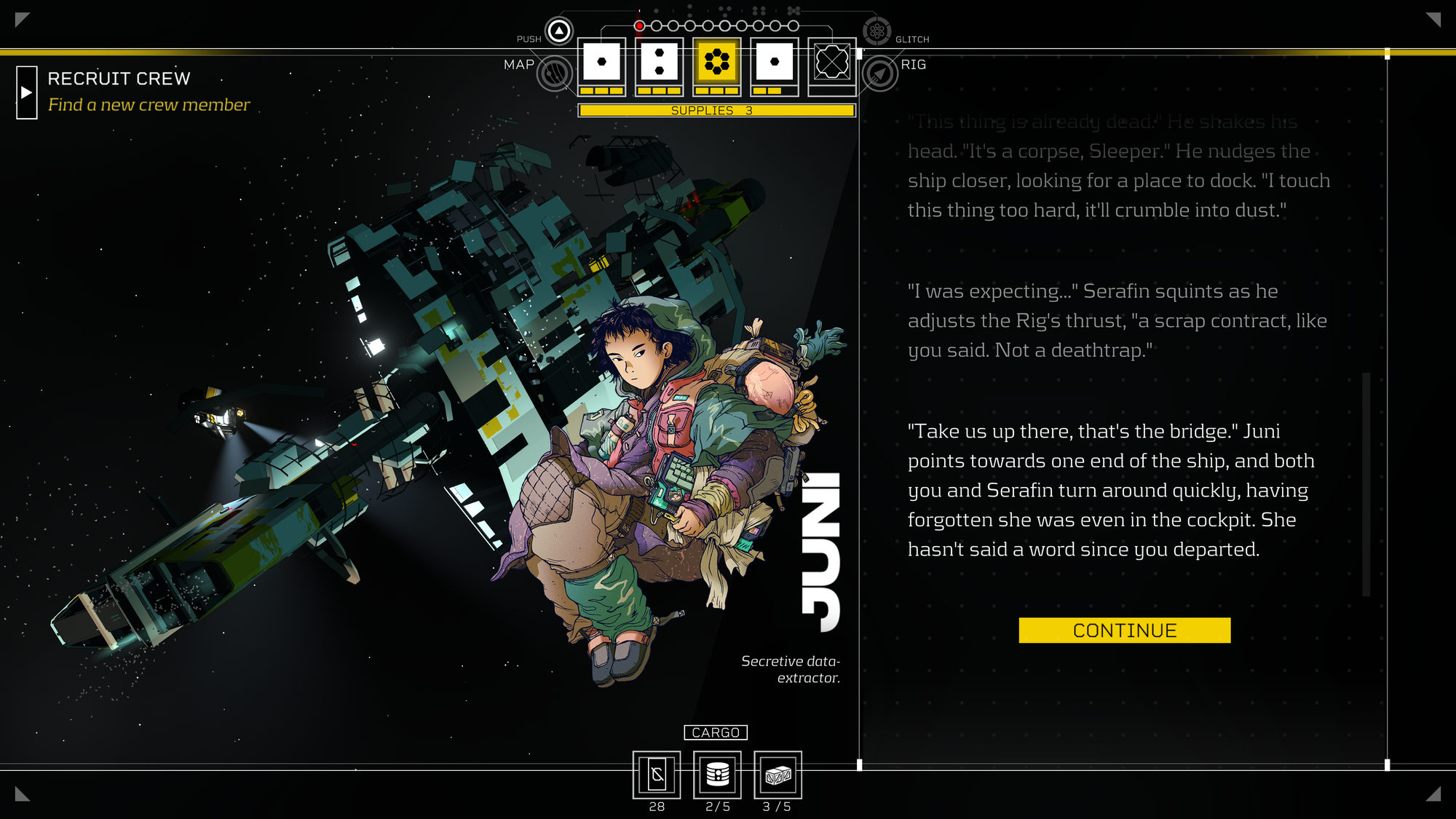
"In the original game, I had this idea that the dice are kind of like an abstraction of the sleeper's declining body. So this time around, I wanted to add some extra complexity and unpredictability to that."
Gareth Damian Martin
Your Sleeper and their crew also have access to Skills that improve or diminish their odds on certain rolls, and bringing a crew with balance across different skills (or going all-in on specific skills in some circumstances) can improve your odds on a Contract. In the first game, a savvy and thorough player could upgrade and unlock all of the Sleeper's potential skills. In the sequel, each of the three classes will have a skill that is completely locked-off, and will need to find workarounds for situations where they might have benefited from that skill - or simply accept losses.
"The game is now much more punishing", Martin says. "I'm trying to make the character classes way more distinctive and actually lead you through the game a bit more in terms of the choices you have to make". The class you pick at the start of the game will naturally be better or worse in different circumstances. A Machinist Sleeper that is good with machines would be right at home in a place like Flotsam, where their engineer skill will come in handy for many tasks, whereas the Operator class might find that their skill deficits lead to subtractions on their dice when they try to complete tasks there (the third class, Extractor, falls somewhere in the middle). In another location, at another hub, your luck might change - but learning to deal with those struggles is part of the game. "The point of the Contract loop is for me to have knobs and levers that I can twist, that will allow me to have impact on all players in a meaningful way," Martin says.
All of this complicates Citizen Sleeper 2 compared to the original. It takes the metaphor laid out in the first game - the way the dice represent the struggles of being a human - and finds new angles to explore them from. In the first game, if your energy is low, you have less dice and can perform fewer activities; one day you might have plenty of energy, but with small numbers on your dice, it's hard to get anything done. Sometimes you'll take a big risk on a long shot and it'll pay off, and sometimes a safe bet will have negative outcomes. You constantly need to seek repair and currency. For the sequel, you have new struggles: if stress has accumulated you might need to rest, for instance. You need to navigate within communities, and know who to trust and when. You need to accept your limitations, the skills that will never develop. You need to intuit who on your crew you can trust, and which Contracts you are most likely to benefit from.
"With Citizen Sleeper 1 I wanted to make a game about my experience", Martin tells me. "I started by wanting to dare myself to write something very honest. I wrote that very first scene in Citizen Sleeper, where you wake up from darkness and it's all about your body, waking up and discovering yourself once more, and the situation you're in - I wrote that from a very personal place of what it felt like to wake up. I don't know why, but mornings are very rough for me".
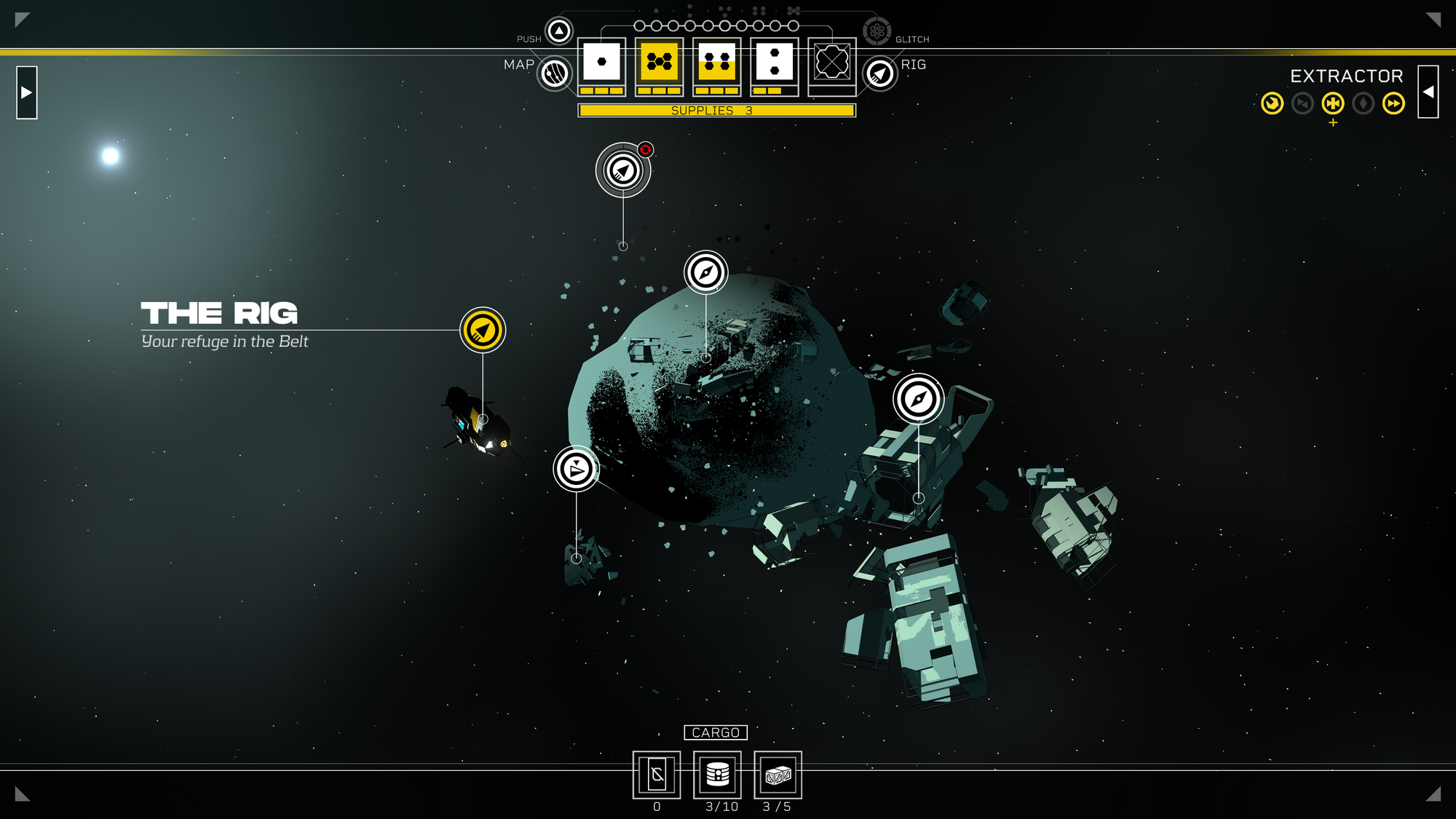
"The point of the Contract loop is for me to have knobs and levers that I can twist, that will allow me to have impact on all players in a meaningful way."
Gareth Damian Martin
Martin approached the first game from a place of vulnerability, and worried that it would not resonate with players. They were surprised, they said, by how much players connected to the Sleeper's experience. "I was very surprised by the amount of solidarity, especially the way people connected to the game from very different experiences. People found it very relatable. I was like, 'Okay, that's fantastic, now that I know that, I want to explore that more with the sequel, in a more conscious way''.
Martin highlights a returning character from Citizen Sleeper, the shipfitter Bliss, who will play a major part in the sequel. Bliss, who will live aboard the Sleeper's ship and administer repairs to their body, has come out as non-binary between games. This has both thematic and mechanical resonance for the sequel. "Bliss is transitioning, and they are the person who will help you fix your body when you break dice slots", Martin explains. "There's a certain kind of solidarity between you and Bliss in terms of your experience of having a body that's unfamiliar to you. It's a subtext that's becoming a text".
"I like Sleepers because they allow for this sort-of exploration of who gets to have what rights, and who gets to be thought of as human, who gets to be thought of as a citizen", Martin continues. "To me, it's not really about an identity struggle as much as it's about a rights struggle, and a struggle to be human. That's the struggle that I'm interested in. I believe very heavily in solidarity, and I don't think these things are exclusive to specific groups. I think there are obviously unique experiences that people go through, but actually Citizen Sleeper 1 especially showed me that there's actually a lot of solidarity out there, and that's something that we really can foster".
"I'm interested in being vulnerable with my work to allow for solidarity, and I'm interested in having vulnerable characters who can also find those points of solidarity. Bliss is a character explicitly exploring that. Bliss sees something in the Sleeper that they can understand. But at the same time those discussions are an opportunity to explore the difficulties or the tensions there as well".
Bliss will be able to repair the Sleeper with either scrap components or rare components, fixing broken dice in the process, but using inferior products to repair your own body will have consequences. "You're going to take a lot of glitch by doing that", Martin tells me. Glitch is another new mechanic: if you accumulate enough of it, you'll end up with a glitched die. These dice may roll either a six or a one, but are much more likely to give you a negative outcome (80% likely) than a positive (20% likely). But, Martin is quick to point out, that doesn't make them strictly bad. "It's not great to have a glitch dice but every so often, a glitch dice can give you a clutch victory if you dare to use it".
"I think they capture the game's overall philosophy, which is all about pushing yourself," they continue. "A glitch dice at 80% worst possible outcome or 20% best possible outcome is me saying to the player, like hey, do you want to maybe try and use that thing? Do you dare?"
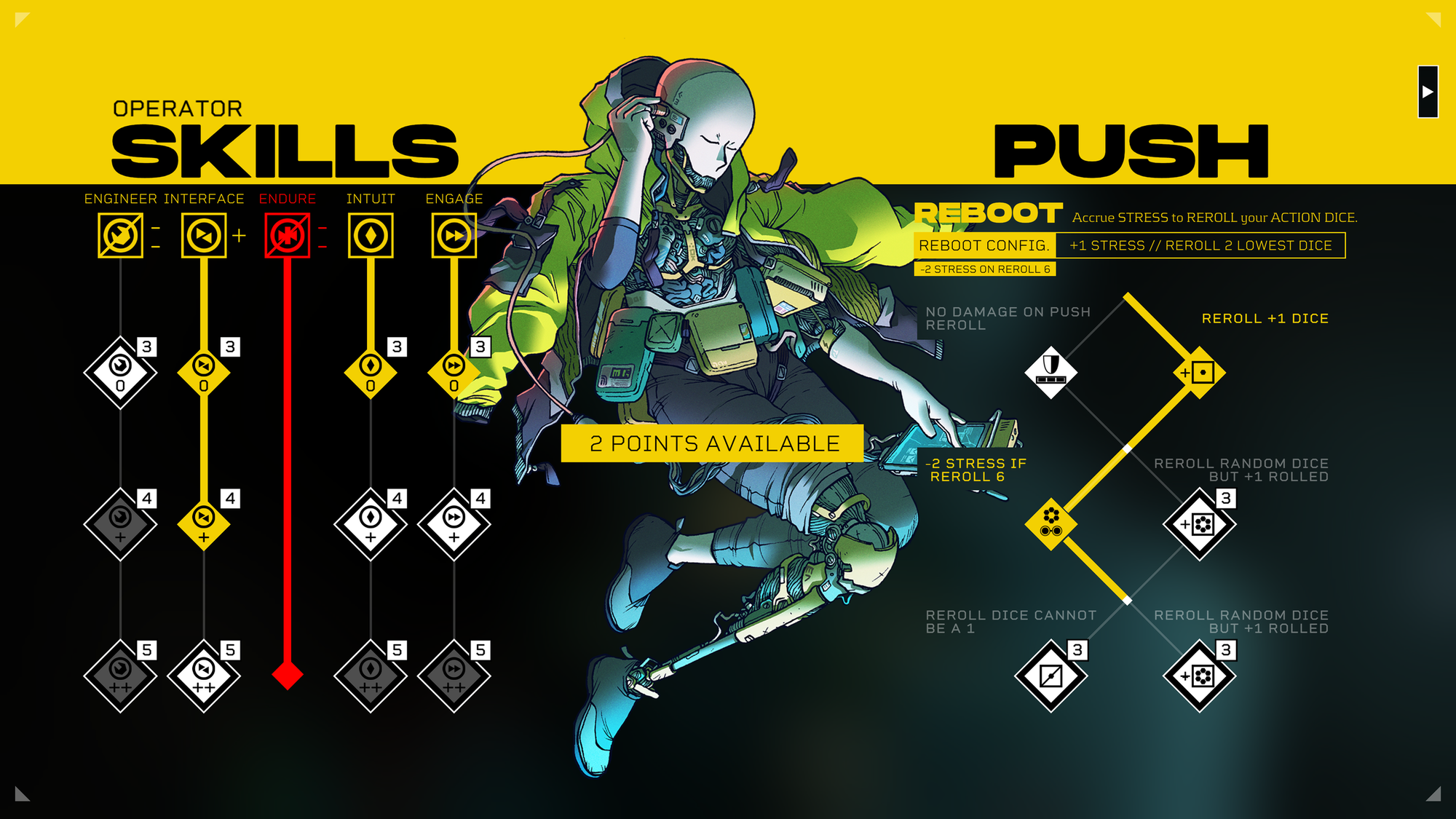
"I'm interested in being vulnerable with my work to allow for solidarity, and I'm interested in having vulnerable characters who can also find those points of solidarity."
Gareth Damian Martin
If Citizen Sleeper was about decline and decay, Martin tells me, then Citizen Sleeper 2 is about crisis. "Crisis is a big theme in this game. In my head, the new dice system is a crisis system. It's built entirely around the idea of pushing your luck and getting away with it. But if you don't get away with it, then it's a crisis, because you can very quickly enter a bit of a death spiral. This was the kind of experience that I really wanted to model. When you're thinking about your own physical stress, often it's a kind of pre-emptive process of care, right? If you're always pushing yourself to the edge, and then you rest, that's gonna put you in a certain position. You have to pre-emptively rest. But at the same time, this is all structural. We're not always in the position to do these things". These are the themes and ideas that the game is dealing with, thematically and mechanically.
"Citizen Sleeper games are about the experience of being a human, told through the distorted mirror of being a robot," Martin continues. "It's hard to make a game where you represent a person using those mechanics. In a way, you have to make the person a robot in order to make those mechanics conceivable to people, and acceptable. Citizen Sleeper is all about this kind of refracted mirror of science-fiction, exploring what it means to be on the edge of being human, in order to find the humanity in that. It's an excuse to write about bodies, to write about stress, to write about all of these things that we experience."
When the interview ends, I double-check and am surprised when I realise that Citizen Sleeper came out just over two years ago, that the sequel has come together so quickly. "I've probably made around 50 to 60% of the game at this point, in terms of code, just raw content. And that it's 120,000 words so far", Martin told me. "Citizen Sleeper 1 is 180,000 words with all its DLC. So I would say it stands to be significantly larger than Citizen Sleeper 1". Martin is planning for different difficulty levels, for a permadeath mode, for more art and characters and locations beyond what is already designed.
At the end of it all I'm left with a 7500 word transcript, which has now turned into a 3500 word article, and a lingering sense that Citizen Sleeper 2 has the potential to really capture something fresh about the human experience. That's a lofty goal, for sure, but I've found myself longing to jump back into my Sleeper's body, taking on stress, failing Contracts, fleeing from calamity, and finding solidarity in the struggle. I am extremely eager to throw myself back into Gareth Damian Martin's rich and compelling crisis.
Citizen Sleeper 2 releases in early 2025 for PC, PS5, Xbox Series X/S, and Nintendo Switch.